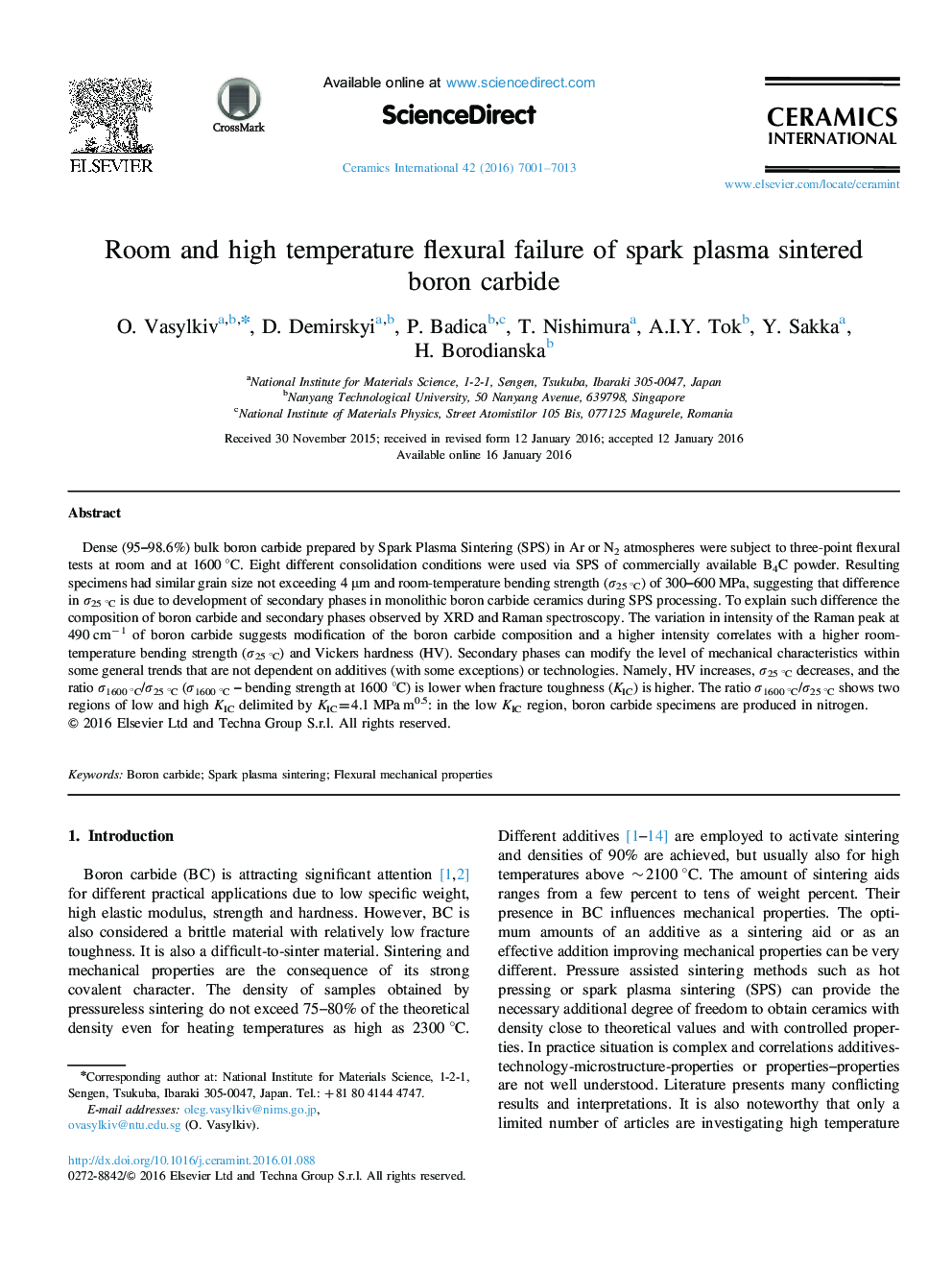| Article ID | Journal | Published Year | Pages | File Type |
|---|---|---|---|---|
| 10624279 | Ceramics International | 2016 | 13 Pages |
Abstract
Dense (95-98.6%) bulk boron carbide prepared by Spark Plasma Sintering (SPS) in Ar or N2 atmospheres were subject to three-point flexural tests at room and at 1600 °C. Eight different consolidation conditions were used via SPS of commercially available B4C powder. Resulting specimens had similar grain size not exceeding 4 µm and room-temperature bending strength (Ï25 °C) of 300-600 MPa, suggesting that difference in Ï25 °C is due to development of secondary phases in monolithic boron carbide ceramics during SPS processing. To explain such difference the composition of boron carbide and secondary phases observed by XRD and Raman spectroscopy. The variation in intensity of the Raman peak at 490 cmâ1 of boron carbide suggests modification of the boron carbide composition and a higher intensity correlates with a higher room-temperature bending strength (Ï25 °C) and Vickers hardness (HV). Secondary phases can modify the level of mechanical characteristics within some general trends that are not dependent on additives (with some exceptions) or technologies. Namely, HV increases, Ï25 °C decreases, and the ratio Ï1600 °C/Ï25 °C (Ï1600 °C - bending strength at 1600 °C) is lower when fracture toughness (KIC) is higher. The ratio Ï1600 °C/Ï25 °C shows two regions of low and high KIC delimited by KIC=4.1 MPa m0.5: in the low KIC region, boron carbide specimens are produced in nitrogen.
Keywords
Related Topics
Physical Sciences and Engineering
Materials Science
Ceramics and Composites
Authors
O. Vasylkiv, D. Demirskyi, P. Badica, T. Nishimura, A.I.Y. Tok, Y. Sakka, H. Borodianska,
